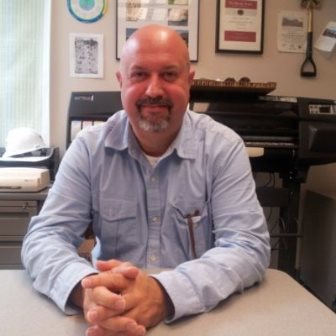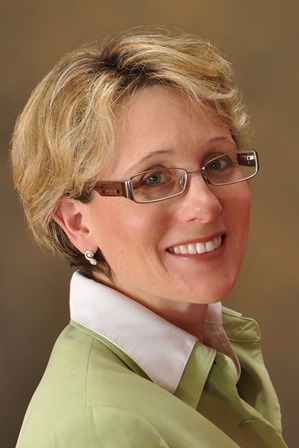By Natalie Hildt Treat | Wed, May 25, 16
Since the beginning, partnerships with state agencies have been central to NEEP’s work. We provide guidance and acquire insights from states, help them connect the dots and leverage resources, and facilitate shared learning and progress through working groups and collaborative processes. It was a pleasure to talk with agency representatives from some of our states to learn about what they've valued most in their relationship with NEEP over the years.

Joseph da Silva, School Construction Coordinator for the Rhode Island School Building Authority, credits NEEP with a lot — including convincing him to leave a career as an architect and move to the Ocean State.
“NEEP helped to develop the school construction regulations which were adopted in 2005 and mandate the Collaborative for High Performance Schools (CHPS) protocols,” da Silva explained. “Having worked in several states in New England, I was impressed with the regulations in Rhode Island. That was one of the reasons I took that job.”
“We may be the only state in the country that mandates that for every project over $500,000," said da Silva. “That’s not just for new construction. Even if a roof is being replaced – that would entail things like higher insulation levels, recycling the roofing materials, etc.”
Real Savings, Real-life Lessons
“Because of CHPS, every project is twenty percent above the existing energy code, on average,” da Siva noted. “That has resulted in significant saving in utility costs, operating expenses, and greenhouse gas reductions. In all of our projects, over fifty percent of construction waste is recycled and diverted from landfills. We’ve been able to save twenty percent above code for water usage, so we’re making better use of our water resources.”
“While we are doing this, da Silva added, “we are using our buildings as a teaching tool in our schools so the next generation is exposed to the impact of buildings and how they can reduce the use of energy in the buildings. Under our regulations and as a condition of funding, in all major projects we require curriculum to integrate green building education.”
Da Silva explained that it’s up to the school to develop a plan that suites their needs and their passions as far as how to do that. “We don’t dictate it, and the money comes right from the construction budget.” said da Silva.

Sound Policy, Strong Networks
“Our work here is very intimately involved with the CHPS protocols. So over the years, I’ve worked a lot with Carolyn Sarno Goldthwaite and her team,” said da Silva, calling her “a tremendous resource.” In addition to managing NEEP’s high Performance Building team, Sarno Goldthwaite is the Chair of the Collaborative for High Performance Schools Board of Directors, a national organization.
Even with fiscal downturns and a recent moratorium on new school construction, da Silva credits good policy and a culture of collaboration with allowing Rhode Island to keep standards high. “The reason we’ve been able to maintain what I see as a national exemplar in green schools is because it’s built into our regulations. The work we do is interrelated in a lot of agencies. That has been a product of NEEP’s ability to bridge those agencies,” said da Silva.”
“Being part of the High Performance Schools Network — which NEEP facilitates — has helped us reach out not only interagency departments but also other non-profits and community stakeholders,” da Silva continued. “These collaborations have allowed us to really develop some innovative tools to allow us to advance green schools — not only in our state but the region, and even the nation.”
“I think that’s why we’ve been successful — because of our stakeholder collaborations,” said da Silva.” It’s not just that we are implementing regulations, it’s the involvement of many stakeholders in that collaboration.”
da Silva and his team are currently conducting a statewide energy study of all schools that will be done in June 2017. “We will survey all 300 schools to benchmark them, then we will develop conservation measures that will maximize energy efficiency and ultimately develop renewable energy solutions to get every one of the schools to net zero. The vision for that would not have been possible had it not been for our collaboration with NEEP, the Rhode Island Department of Energy Resources and National Grid. I’m sure we will be the first state in the country that does that. That’s exciting.”
The Importance of Working Regionally

“One of the things Connecticut finds really important about NEEP is that it brings a small state like us together with other states in the region,” said Diane Duva, Director of the Office of Energy Demand with Connecticut’s Department of Energy and Environmental Protection.
“Working as a region is really important to Connecticut. We’re both part of New England, and part of the greater New York Mid-Atlantic region in many ways. We can work on our common goals together much more effectively and more cost-effectively as a region than we can as individual states,” Duva continued.
“There is so much that we are doing in the region that is both similar and able to be catalyzed by working together. When we work as a region we’re also able to ride out the ups and downs of our own budget situations within our own states, and we can take turns being leaders on regional issues depending on our individual situations,” said Duva.
And of Course, Relationships
We often hear that people are unaware of the variety type of work NEEP does — from facilitating working groups that include utilities and manufacturers and others looking to create shared strategies on things like lighting, HVAC equipment and products — to providing training for local building code officials — and of course hosting the nation’s only Regional Evaluation, Measurement and Verification Forum.
NEEP is one of six Regional Energy Efficiency Organizations (REEOs) designated by the U.S. Department of Energy to provide guidance to states on a range of program and policy issues. And because we work across the Northeast and Mid-Atlantic, we often share learnings and best-practices to assist state energy offices and public utility commissions.
It’s through building relationships and trust that we are able to engage and offer technical and policy expertise when states request it. States, as we know, are the workhorses of public policy. Often subject to changes in funding levels or political administration, state agencies are home to many unsung heroes taking the long-view and working to advance energy efficiency.
Libby Dodson, Energy Efficiency Programs Coordinator with the Pennsylvania Department of Environmental Protection, is one of those individuals.
“Throughout my 13 years at DEP," Dodson explained, “I have worked with the Northeast/Mid-Atlantic Appliance Efficiency Working Group, Multi-Family working Group, Green Schools working group, High Performance Buildings working group and the Regional Building Energy Codes leadership group and the Pennsylvania Energy Code Collaborative — all facilitated by NEEP. These work groups have been an excellent and efficient way to stay abreast of developments in other states’ programs and policies, and, for us to report on Pennsylvania’s energy efficiency related activities.”
“In the past,” Dodson continued, “NEEP helped us draft legislation to create energy efficient appliance standards. Recently, NEEP staff have been facilitating the Pennsylvania Energy Code Collaborative (PECC). Through that group, we are developing products that will help to educate policymakers and legislators who may not be familiar with the benefits of building energy codes. NEEP is well connected with professionals working with codes in our state and beyond, which allows them to provide an integrated and dynamic approach to coordinating efforts among the PECC members and other external partners.”
With the Department’s staff much leaner than it was in years past, Libby said her team appreciates NEEP even more. “Considering all the many ways we work with NEEP, having access to their varied expertise and working groups at our fingertips whenever we need it is what I consider the biggest bang for the buck. It’s a relationship that will continue to help Pennsylvania meet our evolving priorities and needs with regard to energy efficiency,” said Dodson.
Thanks Libby. We love you too, and we’re grateful for all the work that you and folks like you are doing across the states. We’ll see you in June at the Northeast Energy Efficiency Summit!
This blog is one of a series celebrating NEEP's 20th Anniversary. Check out our blog for more on the history of energy efficiency in the region.
